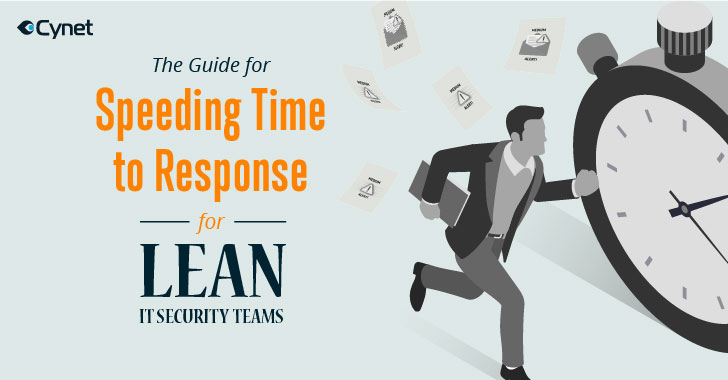Most cyber security today involves much more planning, and much less reacting than in the past. Security teams spend most of their time preparing their organizations' defenses and doing operational work. Even so, teams often must quickly spring into action to respond to an attack.
Security teams with copious resources can quickly shift between these two modes. They have enough resources to allocate to respond properly. Lean IT security teams, however, are more hard-pressed to react effectively. A new guide by XDR provider Cynet (download here), however, argues that lean teams can still respond effectively. It just takes some work.
For teams that are resource-constrained, success starts with having a clear plan and putting the tools and infrastructure in place for the organization to follow properly. The guide breaks down the tools, factors, and knowledge that go into optimizing an organization's time to respond.
Building a successful incident response plan
Today's cyber-attacks take hours or less to succeed. Once ransomware is activated, it takes just a few seconds to begin encrypting any file it finds. This makes speed one of the biggest keys to success in mitigating the damage and preventing further attacks. Any delay could be disastrous.
To avoid delays from the start – whether they stem from communication issues, lack of defined roles, or simply not knowing what to do – lean organizations must build clear, transparent incident response plans.
According to the guide, a good incident response plan includes these six elements:
Preparation – building a strong organizational security policy and constantly looking for potential threats. Identification – the ability to identify threats by correlating signals and data from a wide range of sources (from devices to networks) Containment - The ability to quickly find and isolate the malicious attack, both in the short and long terms Eradication – Once a threat is contained and identified, a successful incident response plan will focus on removing it entirely from the environment. Recovery – the ability to quickly return to normalcy and standard operations by restoring affected devices and networks Lessons learned – understanding the attack, its sources, and how to prevent similar strategies from succeeding in the future.Having the right tools
A good plan is a great start, but it's not enough by itself. Lean security teams must have the right tools and platforms to help them cover the gaps in their defenses without creating more work and stress. This is where tools such as response automation, advanced detection and response, network security, and threat intelligence come into play.
More important, though, is how teams build the right stack to maximize their efforts without getting bogged down in managing a complex system. In terms of speed to response, having tools on a single pane of glass offers the best opportunity to respond quickly to an attack.
You can learn more by downloading the guide here.
Found this article interesting? Follow THN on Facebook, Twitter and LinkedIn to read more exclusive content we post.
.png)
 3 years ago
205
3 years ago
205 















 Bengali (Bangladesh) ·
Bengali (Bangladesh) ·  English (United States) ·
English (United States) ·